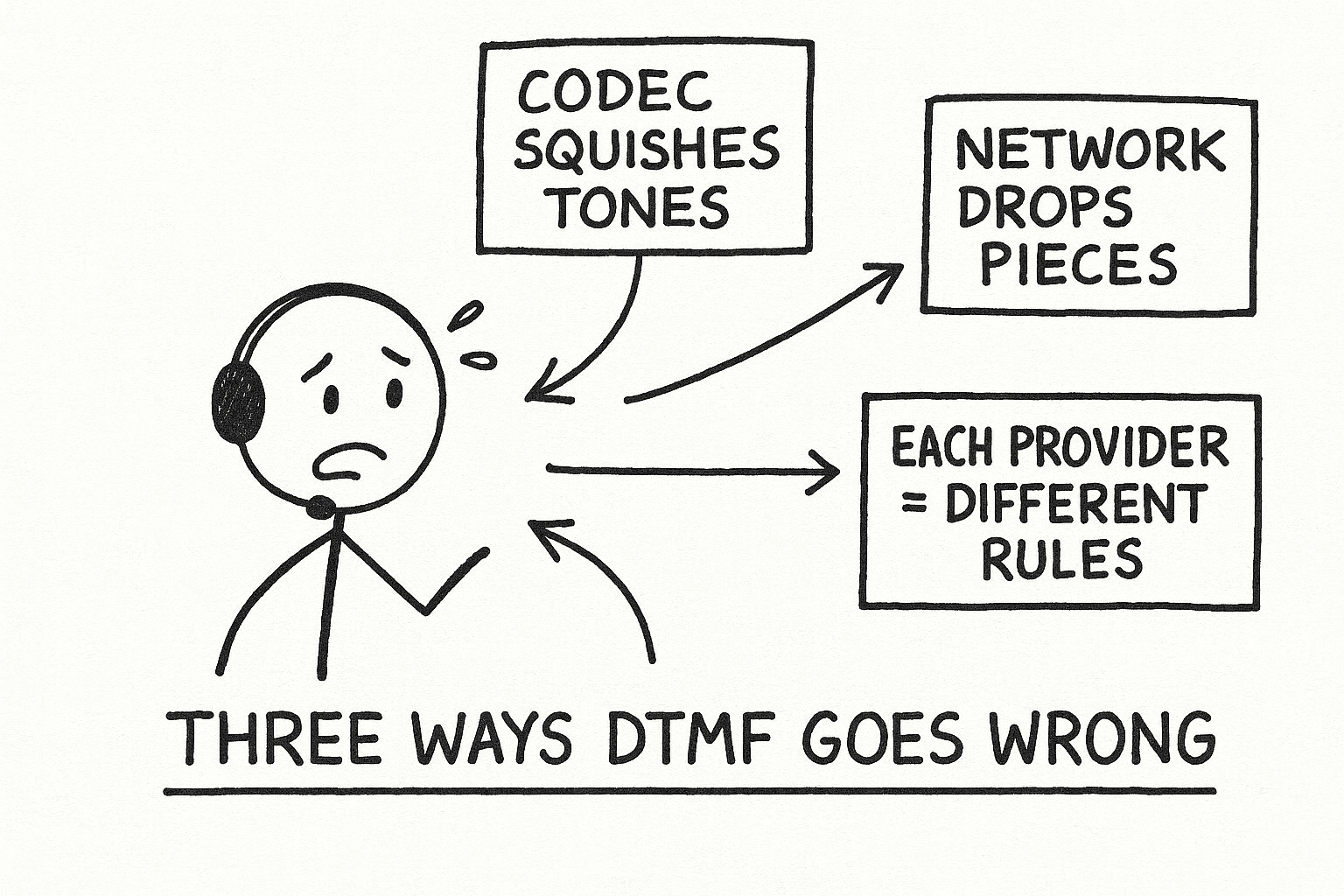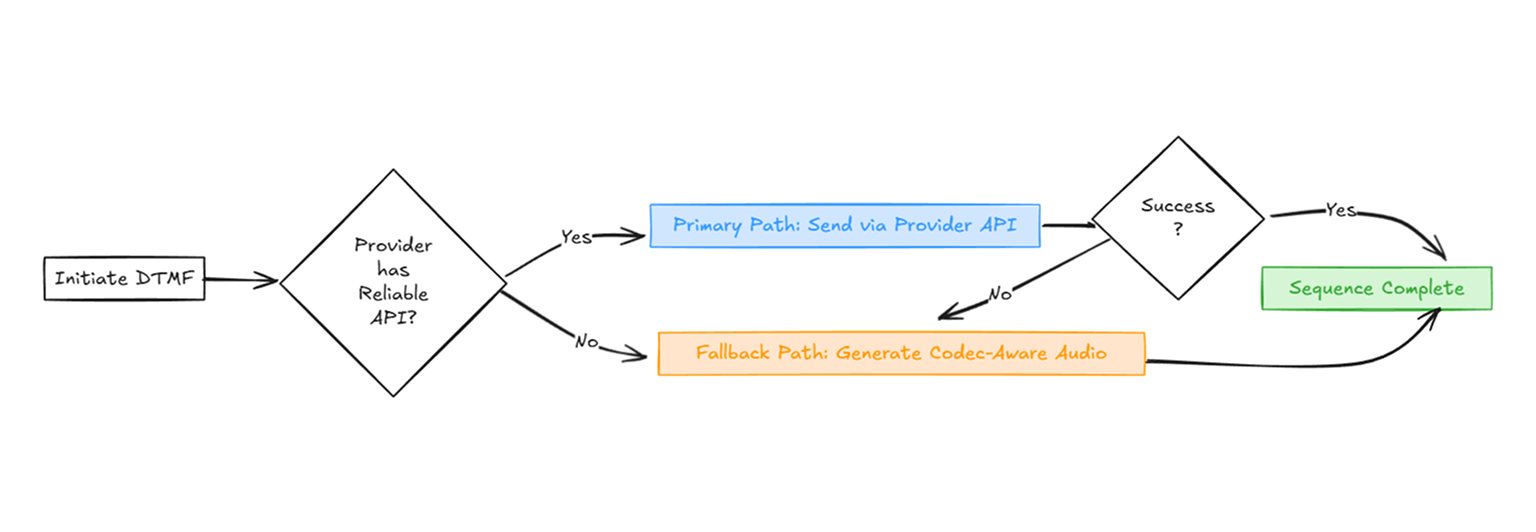How We Solved DTMF Reliability in Voice AI Systems


Building a voice agent that can navigate a phone menu might seem easy.
You generate a tone, the system hears it, and the call moves forward.
Well, it's not that simple. One of our forward-deployed engineers, Steven, was working with an enterprise customer trying to get their agent deployed.
Their use case involved navigating IVR menus across five different providers, and the unreliability was killing their success rates.
The failing DTMF tones led to longer call durations and frustrated end-users.
After countless hours of debugging failed call flows and frustrated user reports, we mapped out the core issues.
It comes down to 3 things:

Voice calls run on codecs like Opus or G.711, which are built to compress human speech. They use psychoacoustic models that prioritize the frequencies in our voice (roughly 300-3400 Hz) and discard what the human ear doesn't perceive as critical.
A DTMF tone however is not speech. It's a precise combination of 2 pure sine waves.
For the digit "1", it's exactly 697 Hz and 1209 Hz. When a codec compresses this signal, it quantizes, filters, and distorts these pure frequencies.
The harmonics shift, the phase relationship breaks. To the receiving system, the tone becomes an unrecognizable smudge of audio. The result is a failed input.
Voice packets travel over public networks. This means packet loss, jitter, and bandwidth fluctuations are unavoidable.
DTMF detection algorithms, often based on Goertzel or FFT approaches, need a clean, consistent signal for at least 40-50ms to confirm a digit.
Jitter reorders packets, creating gaps in the tone. Packet loss deletes parts of it entirely.
A receiving IVR might hear a garbled signal, nothing at all, or misinterpret a "11" as a "7".
This is especially true for legacy IVR systems that are notoriously unforgiving.
Yes, there's a standard for sending DTMF out-of-band: RFC 2833. It defines sending the DTMF event in a separate RTP payload, bypassing the audio stream entirely.
In a perfect world, everyone would use it, and this blog post wouldn't exist.
The problem is, production isn't perfect. The real world is a patchwork of legacy IVR systems, custom telephony setups, and carrier-specific interpretations.
We found that:
An approach that works perfectly on one provider fails on another. This creates a compatibility matrix from hell for any developer.

We started with the obvious approach: generate DTMF tones as audio and send them through the voice stream. We carefully crafted each tone using the exact frequencies:
And so on...
This worked on localhost. It worked in a clean network. But it failed inconsistently in production. The combination of codec mangling and network noise made it too unreliable for real-world use.
Next, we used provider-native APIs to send DTMF digits out-of-band.
This bypasses the audio stream entirely, avoiding compression issues.
This was a step forward, but reliability was still inconsistent. Some providers had robust APIs, others were flaky. Some didn't support it at all for certain call types.
We had traded one set of problems for another.

We realized there is no single silver bullet.
The only solution is an intelligent, adaptive system that uses the best tool for the job on a per-call basis.
Here is the architecture we built:
By abstracting this complexity away, we achieved predictable performance.
Users no longer get stuck in IVR loops. Our support queue for DTMF-related issues is nearly empty because the system now self-heals.
DTMF is a perfect example of a problem that looks simple on the surface but hides immense technical depth. The "right" architecture isn't the most elegant one on a whiteboard but one that is a resilient, multi-layered system that works in the messy reality of production.
We're now applying this hybrid, adaptive model to other hard problems like voicemail detection and call transfers.